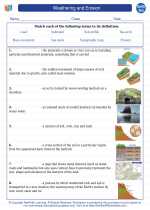External Respiration
External respiration refers to the process of gas exchange that occurs in the lungs. It involves the exchange of oxygen and carbon dioxide between the air in the lungs and the blood in the pulmonary capillaries.
Process of External Respiration
- Pulmonary Ventilation: The process of breathing, which involves the inhalation of air rich in oxygen and the exhalation of air rich in carbon dioxide.
- Diffusion of Gases: Oxygen from the inhaled air diffuses across the walls of the alveoli in the lungs into the pulmonary capillaries, while carbon dioxide diffuses from the capillaries into the alveoli to be exhaled.
- Transport of Gases: The oxygen that diffuses into the blood binds to hemoglobin in red blood cells and is transported to the body tissues. Meanwhile, carbon dioxide produced by the body tissues is transported in the blood to the lungs to be exhaled.
Factors Affecting External Respiration
- Surface Area: Larger surface area in the alveoli allows for more efficient gas exchange.
- Thickness of Respiratory Membrane: A thinner membrane allows for faster diffusion of gases.
- Partial Pressure Gradient: The difference in partial pressure of gases between the alveoli and the blood affects the rate of diffusion.
- Respiratory Surface Moisture: Moist surfaces facilitate gas exchange.
Study Guide
To understand external respiration, it is important to grasp the anatomy and physiology of the respiratory system, including the structure and function of the alveoli, the process of pulmonary ventilation, and the mechanisms of gas exchange. Additionally, understanding the role of hemoglobin in oxygen transport and the factors that influence the efficiency of external respiration is crucial.
Key topics to study include the respiratory membrane, partial pressure of gases, and the relationship between pulmonary ventilation and gas exchange. Practice questions related to these topics will help solidify your understanding of external respiration.
[External Respiration] Related Worksheets and Study Guides:
.◂Earth Science Worksheets and Study Guides High School. Weathering and Erosion
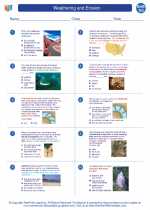
 Worksheet/Answer key
Worksheet/Answer key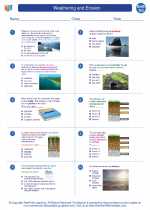
 Worksheet/Answer key
Worksheet/Answer key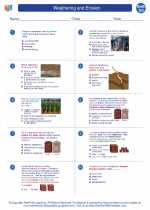
 Vocabulary/Answer key
Vocabulary/Answer key
 Vocabulary/Answer key
Vocabulary/Answer key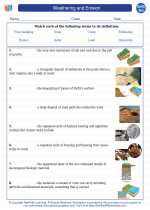
 Vocabulary/Answer key
Vocabulary/Answer key